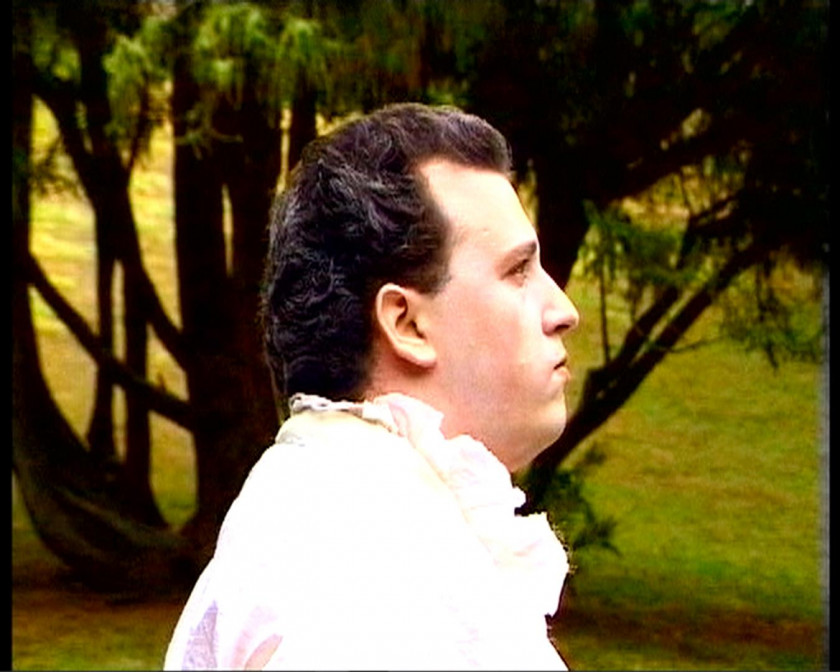Duettino
video


2001
Video, 4:3, loop, colour, sound, 2'06''
Inserted in the body of work that Vasco Araújo developed from the show's theme, Duettino is a video that fits in the first phase of the artist's career, which includes works such as Diva, a Portrait, 2000, the video installation La Stupenda, 2001, Recital, 2001-2 and Sabine/Brunilde, a work presented in 2003, following the EDP New Artists Award, 2002. Focusing particularly on the thematic universe of opera, classical tragedies or fado, in these works the artist addresses issues such as stardom, artificiality, or the personified gender identity, like in the prima donna and the castrati.
In Duettino, we are confronted by a male figure, embodied by the artist himself and soberly characterized in the line of an operatic character. With his face in white and wearing a frill shirt, Vasco Araújo plays for the camera the duet La Ci Darem La Mano, written by Lorenzo Da Ponte, inserted in the first act of Mozart's famous opera, Don Giovanni, 1787. Doing the scene solo, the artist takes on the dialogue between the seductive Don Giovani and the committed Zerlina, making use of his recognized vocal skills to recite the scene without musical backup.
Formally made up of a circular traveling motion defined around the figure inserted in the middle of nature, this work conveys the idea of vertigo, caused by the confrontation between the fixed focal point - defined by the camera focus on the face - and the circular movement of the camera. The slight variations in speed that cause the image to drag, blur the background, where we see a green landscape, and accentuate a feeling of restlessness. The theatrical dimension is reinforced by the silence at the beginning and end of the video, in a continuous loop.
Rita Salgueiro